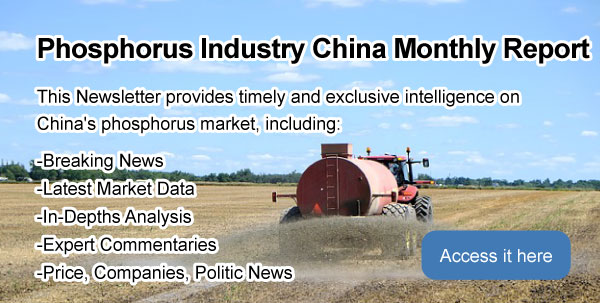CCM predicts China’s fertiliser price to remain stable in short-term
Publish time:5/29/2018 12:00:00 AM Source: CCM
Information collection and data processing: CCM For more information, please contact us
As China’s fertiliser industry is facing heavy pressure by environmental protection measurements and restructure, many market participants are unsure about the price development. CCM predicts that the prices of fertilisers are not likely to surge in the short term because of the unbalanced supply and demand situation as well as other factors.

CCM is predicting that China’s phosphate fertiliser prices will remain largely influenced by market supply and demand and are impossible to increase significantly in the short term. Even the recently announced capacity expansion limitation in the middle and upper reaches of the Yangtze River will not change that situation.
Looking
at the capacity control of phosphate companies located along the Yangtze River,
fertiliser prices should normally boost as a result. However, according to
CCM’s research, the supply and demand situation in China, combines with import
and export trends as well an environmental protection measurements contradict a
significant price rise in the near future.
The
FOB prices of China’s diammonium phosphate (DAP) have recently increased due to
the larger demands from India. However, this price is only slightly different
from the average domestic ex-works price in the first quarter. Therefore, the
domestic phosphate fertiliser prices are not likely to soar. Additionally,
China exported 2.71 million tonnes of MAP and 6.40 million tonnes of
DAP in 2017, relatively high records in recent years. However, the export
volumes this year are estimated to drop YoY triggered by the capacity increase
of some international enterprises.
Furthermore,
the phosphate fertiliser industry in China is now facing more stringent
environmental policies which require high-level disposal of waste water, gas,
and residues. Unqualified factories are to be rectified or shut down, reducing
the overall market supply of phosphorus ores and thus lifting phosphate
fertiliser prices. Nevertheless, the implementation of environmental protection
law may progress slowly, and so will do the price change. Even the operating
costs of phosphate fertiliser manufacturers will keep an upward trend, forcing
them to quote for higher prices, the actual transaction prices, on the other
hand, is strongly determined by downstream demand and market supply.
China
has developed into the world's largest manufacturer and consumer of
fertilisers. After all, the Middle Kingdom uses more than a third of the
world's fertilisers available, which is equivalent to the combined consumption
of the USA and India. China is in heavy need of fertilisers to
satisfy its growing demand for crops and other agricultural products.
The
information for this article comes from CCM, China’s leading market
intelligence provider for the fields of agriculture, chemicals, food and feed.
Follow CCM on Twitter: @CCM_Kcomber
People who read this article also read what the article
- Inner Mongolia Bihai Animal Husbandry building co-production capacity for VK3 and basic chromic sulphate 2023/05/19
- Zhucheng Dongxiao's erythritol project and Techno's sucralose project completed 2023/06/13
- Stevia projects of Huijia Biotech and Hirye Biotech in progress 2023/05/08
- Zhejiang NHU allocates funds to ensure smooth implementation of 250,000 t per year methionine project 2023/06/16
- Operating rate of glyphosate TC producer may remain low in September 2023/08/17
- Import and export of China's seeds and agricultural products in March 2023 2023/05/29
- Shandong Yonghao plans to build 1,000t per year pyroxasulfone capacity 2023/08/10
- China’s Ministry of Agriculture and Rural Affairs designates corn as a key crop for this year's economic plan 2023/05/30
- Price Trend of Haloxyfop-P-methyl in China to 2025 2023/07/14
- IDAN Survey in China 2022 2023/07/11
